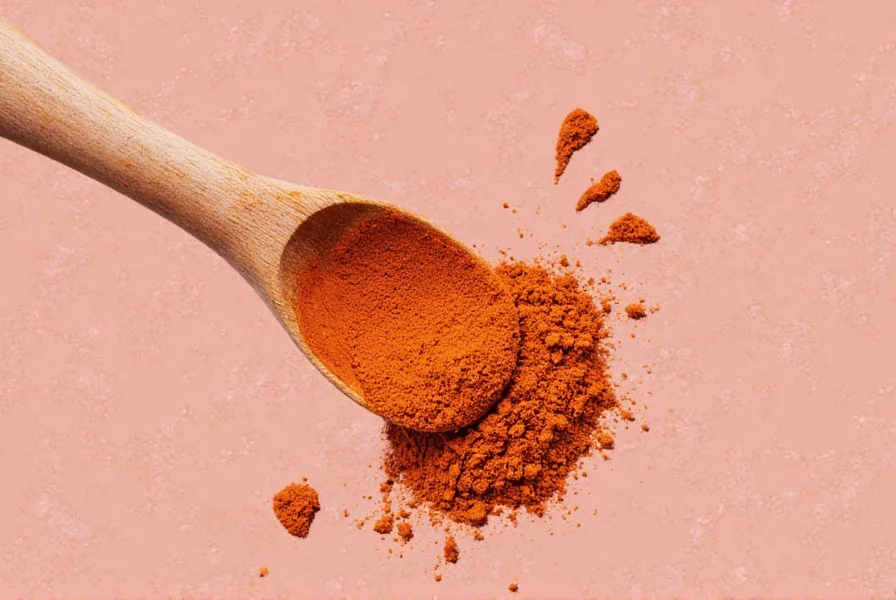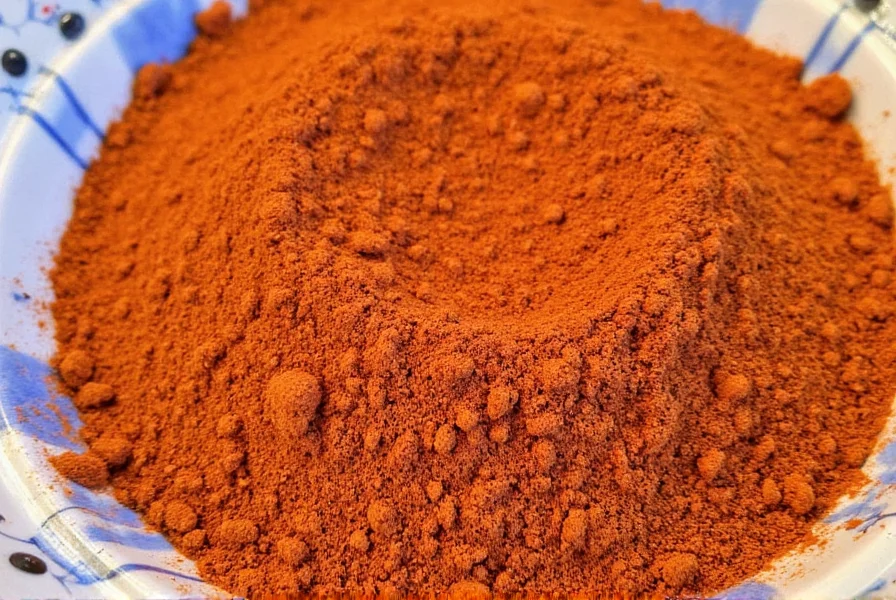Need an ancho chili powder substitute? Whether you're out of it mid-recipe or exploring new flavors, these 7 proven alternatives deliver the perfect balance of heat, smokiness, and depth for any dish. Here's exactly what to use, how much to substitute, and when to choose each option.
| Substitute | Flavor Profile | Heat Level (SHU) | Best For | Substitution Ratio |
|---|---|---|---|---|
| Guajillo Powder | Tangy, berry-like, slightly smoky | 2,500–5,000 | Red sauces, marinades | 1:1 |
| Pasilla Negro Powder | Grassy, raisin-like, earthy | 1,000–2,500 | Dark sauces, moles | 1:1 |
| Chipotle Powder | Smoky, woody, spicy | 5,000–10,000 | BBQ rubs, hearty stews | ½:1 (reduce heat) |
| Smoked Paprika | Earthiness, sweetness, smoke | Negligible | Dishes where heat isn't key | 1:1 + pinch of cayenne for heat |
| Cayenne Pepper | Sharp, fiery | 30,000–50,000 | Spicy dishes, small amounts only | ¼:1 (use sparingly) |
| Mild Chili Powder Blend | Cumin-heavy, savory | Varies | Tex-Mex recipes | ¾:1 (add smoked paprika for depth) |
| Crushed Red Pepper Flakes | Spicy, garlicky, rustic | 30,000–45,000 | Italian-inspired heat | ½:1 (crush finely for even distribution) |
Why Ancho Chili Powder Matters in Your Recipes
Ancho chili powder (made from dried poblano peppers) provides a unique smoky-sweet foundation for Mexican cuisine. With mild heat (1,000–2,000 SHU), it enhances mole sauces, enchiladas, and spice rubs without overwhelming dishes. When substituting, prioritize matching both flavor profile and heat level to maintain recipe integrity.
When to Use Each Substitute
- Make mole? Pasilla Negro (earthy depth) or Guajillo (tangy brightness)
- Need smokiness without extra heat? Smoked Paprika (add cayenne for kick if needed)
- Spicy dishes like chili or BBQ? Chipotle Powder (use half the amount)
- Quick Tex-Mex fix? Mild Chili Powder Blend (add ¼ tsp smoked paprika per tsp)
- Pasta or pizza? Crushed Red Pepper Flakes (crush finely for even heat)
- Zero heat needed? Sweet Paprika + pinch of cumin for depth

Pro Tips for Perfect Substitutions
- Start small, taste often: Add 25% of the substitute first, then adjust. You can't remove spice once added.
- Balance with acid: A splash of lime juice or vinegar cuts excessive heat from substitutes like cayenne.
- Toast for depth: Lightly toast ground substitutes in a dry pan for 30 seconds to enhance flavor complexity.
- Store properly: Keep all spices in airtight containers away from light to preserve potency for up to 12 months.
Frequently Asked Questions
What's the closest substitute for ancho chili powder?
Guajillo powder is the closest match, offering similar mild heat with tangy berry notes. Use a 1:1 ratio. For deeper flavor, combine ¾ Guajillo + ¼ Pasilla Negro. Both are dried poblano relatives and share the same smoky-sweet base.
Can I use regular chili powder instead of ancho?
Yes, but standard chili powder blends contain cumin and garlic powder that alter flavor. Use ¾ tsp regular chili powder + ¼ tsp smoked paprika per 1 tsp ancho. This adds the missing smokiness while balancing the cumin notes.
Is chipotle powder the same as ancho?
No. Chipotle is smoked jalapeño (5,000–10,000 SHU) with intense heat. Ancho is milder (1,000–2,000 SHU). Substitute at ½:1 ratio (e.g., ½ tsp chipotle for 1 tsp ancho) and add ¼ tsp sweet paprika to balance smokiness.
How much substitute should I use for ancho?
For mild substitutes (Guajillo, Pasilla), use 1:1. For hotter options (Chipotle, Cayenne), start with 50% less. Always taste before adding more. Smoked Paprika works 1:1 for color but needs cayenne for heat.
Can I make my own ancho substitute?
Yes! Mix 1 tbsp smoked paprika + 1 tsp cumin + ½ tsp garlic powder + pinch of cocoa powder. This replicates ancho's smoky-sweet complexity. Store in an airtight container for up to 3 months.
What's the difference between ancho and regular chili powder?
Ancho is pure dried poblano pepper (1,000–2,000 SHU). Regular "chili powder" is a blend of chilies + cumin, garlic, oregano, etc. Ancho has cleaner, fruitier notes while blends are more savory. Use ancho for authentic Mexican dishes; blends work for Tex-Mex.
Final Thoughts
While nothing replaces authentic ancho chili powder's unique smoky-sweet profile, these substitutes deliver reliable results when you're in a pinch. Remember: prioritize matching heat levels and flavor notes over exact ratios. For mole or complex sauces, Guajillo and Pasilla Negro are your best friends. For quick weeknight meals, Smoked Paprika + cayenne creates a versatile base. Always taste as you go—spice is an art, not just a science!











 浙公网安备
33010002000092号
浙公网安备
33010002000092号 浙B2-20120091-4
浙B2-20120091-4